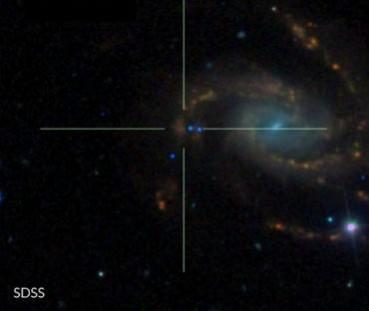![NASA's Chandra X-ray Observatory and the NSF's Jansky Very Large Array captures a supernova G1.9 0.3 in the Milky Way. [Representational image] nasa, supernova, G1.9 0.3, space,](https://data1.ibtimes.co.in/en/full/635913/nasa-supernova-g1-9-0-3-space.jpg?h=450&l=50&t=40)
For the first time researchers have had the opportunity to observe the supernova remnant of a star within six hours of its explosion. This is one of the earliest analysis ever made.
Also Read: NASA: A peanut-shaped asteroid might bang Earth!
The following observations of supernova -- SN 2013fs -- were made by an international group of researchers. The cohort of researchers observed an amazing radiance being emitted by a super giant red star just after its explosion.
A supernova occurs when a star runs out of nuclear fuel at the end of its lifecycle. The star then starts eating its own core and ends up exploding. The SN 2013fs was a normal type-II supernova, the most common type of stellar explosion. Stars involved in this type of supernova are usually 50 times as massive as the Sun.
These observations helped scientists understand how these explosions occur. The supernova took place in a galaxy called NGC7610, located in the constellation Pegasus, around 160 million light years away from Earth
"It is as if the star knows its life is ending soon and puffs out material at an enhanced rate during its final breaths," said Ofer Yaron, an astrophysicist and staff scientist at the Wiezzman Institute of Science in Israel, according to The Telegraph.
"Imagine a volcano, bubbling and expelling hot material before erupting," Yaron added.

The light emitted by this ancient blast travelled through space for over 160 million years and reached our planet on October 6, 2013, when it was spotted by the Palomar Observatory, located in San Diego, California, during an automated sky survey.
Once this supernova was observed, Yaron and his colleagues informed an astronomer, Daniel Perley, from the University of Copenhagen, who was coincidentally also analysing the night sky in Hawaii using the Keck telescope. The spectroscopic signatures of the emissions given out by the supernova were captured by Perley.
"Until several years ago, catching a supernova even a week after its explosion was regarded as early," astrophysicist Yaron stated, as reported by ResearchGate.
"This is not the case anymore, and with new wide-field automated and fully robotic sky surveys, we have begun catching events a day or less after explosion," he said further.
This was a rare chance researchers got to investigate the cosmic conditions of a star before the end of its life. The observations made by researchers were phenomenal.
"These observations of a supernova in its infancy are a remarkable achievement, revealing that the dying star was embedded in a dense shell of gas," Norbert Langer, an astronomer at the University of Bonn, Germany, wrote in a commentary in the same issue of Nature Physics.
There is now the hope that researchers will be able to identify supernovas soon after they occur, thanks to the advanced telescopes that are being developed, Yaron explained.
This would allow the scientists to explore and understand violent supernovas.
"If you ask swimmers in the sea, they don't want to see sharks. But if you ask divers, that's all they want to see," said Yaron, as quoted by The Guardian.
"It's the same thing. We all hope there will be a supernova in the Milky Way soon. As long as it's not too near," he said further.









